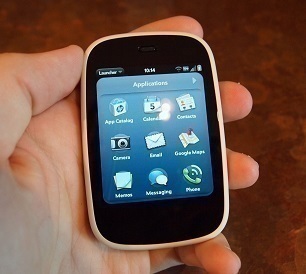There are a number of topics that I’d like to blog about, but I’m afraid our current cultural climate doesn’t leave room for the kind of nuance they’d require. Things like our conflicted feelings about getting our youngest vaccinated. We’re pro-vaccine in this house, and 4 out of 5 of us got our shots as soon as responsibly possible once we were eligible. But our 10-year old, who’s already had and recovered from Covid, is a different discussion. It requires consideration and nuance — but saying such things out loud invites input from crazy people, waiting to seize any apparent endorsement of their anti-vac stupidity. If we were to admit some trepidation about vaccinating our youngest, that might somehow give credence to the horse-paste crowd…
Here’s another such topic: 5G cellular networks. I’m going to write about the cluster that is telecommunication technology at the end of 2021, but I don’t want my technical mumbo jumbo to be interpreted as any sort of nod to the “5G networks are a secret plan by Bill Gates to control the minds of people who got microchipped by the Covid vaccine” nut jobs. There’s stupidity, and then there’s conspiracy nut stupidity. I just want to talk about the first kind.
Here in the States, all of the big cellular networks are in the process of shutting down their 2G (aka “Edge”) and 3G infrastructure, to make room for more 5G coverage. On the surface, maybe this sounds like a good plan. I remember laughing at a distant relative still clinging to their “car phone” as Canada shuttered their analog cellular infrastructure late last decade. I’m sure I thought something snarky, like “get with the times, old man.” But sometimes there’s good reason not to rush into euthanizing old technology…
What most people don’t know is 5G is not a singular replacement for previous networks — and won’t be for a long time. In fact, there’s two kinds of 5G, and there will probably have to be a third. The network technology touted by your cell phone carrier as being “next gen” doesn’t actually work inside most buildings…basically at all. So all those cell towers out there, poised to be stripped of their 2G and 3G antennas, won’t be able to help you make a call or update your Instagram if you happen to be inside a building.
Instead, a second 5G infrastructure needs to be created, one that runs on a different frequency entirely and which can penetrate building walls. The unfortunate downside of these low frequencies is that the range sucks — they won’t work outside! So we need two 5Gs, two sets of antennas, two sets of hardware in our phones, and we need to seamlessly move between them. Seems simple enough, but wait!
Turns out there’s a third scenario: places that are partially enclosed so can’t be covered with long-range 5G, but are too big to be properly covered by short-range 5G. Outdoor shopping malls, stadiums, and even “urban canyons” — downtown areas surrounded by tall buildings. These environments may require a different infrastructure again; a “medium range” 5G, that needs different antennas and different hardware in your cell phones.
Now you start to see why they need to cannibalize the older, but still functional, 3G networks — they need room on the towers to run multiple kinds of 5G networks, they need more towers, and they need more people carefully stacking the house of cards that may eventually fulfill the promise of 5G’s faster speeds. Three of everything, and then it’ll be great!
But hey, time marches on, progress in inexorable, and we should just push through these challenges, so we can be better connected, right? We gotta have our Instagram stories as fast as possible, so “get with the times, old man” and all that…
Except there’s another problem. It turns out that millions of “field devices” that depend on 3G are being killed off. 2G or 3G-enabled medical monitoring devices that give patients freedom, connected car technologies that help send life-saving aid in accidents, soil sensors that help farmers make decisions to optimize crop yields, and pipe line and oil field sensors that keep our addiction to fossil fuels fed while helping avoid ecological disasters. All of these will have to be replaced with 5G-enabled devices — and maybe replaced multiple times, until 5G finally stabilizes. 5G won’t make things better right away, in fact, its going to make them worse for a long time…
But even with all these concerns, its going to happen anyway. AT&T has already shut down their 2G network, those customers are out of luck; their 3G customers lose service in December (including all 3 of our cars, which can never be upgraded to 4G). Verizon and T-Mobile will follow suit later in 2022. When you ask a carrier what’s to be done about your old equipment, their only answer is to sell you a new phone — despite the fact that consumer smart phones are only a part of the equation, all they can offer is to take your money for something you probably don’t need.

And let’s talk about that, because selling you a new, slightly different phone every 12-24 months is big business. Stupid people, who don’t understand that technology evolution inevitably plateaus, are still convinced by Apple that they have to have the latest iPhone. And carriers are happy to help create that need. Our kids each have an iPhone 6s — a phone released in September of 2015. Its a great phone, has all the features they need, can be purchased for about $90 used, and the only real reason to replace will happen when our cell carrier refuses to support it.
 My personal phone is a svelte HP Veer from 2011. Its a total of 4 inches diagonal, doesn’t track my location or report my data to Google, doesn’t wake me up with notifications or bother me with ads. And if it weren’t for the 3G shut down, I’d be the crazy uncle using that thing until the hardware falls apart.
My personal phone is a svelte HP Veer from 2011. Its a total of 4 inches diagonal, doesn’t track my location or report my data to Google, doesn’t wake me up with notifications or bother me with ads. And if it weren’t for the 3G shut down, I’d be the crazy uncle using that thing until the hardware falls apart.
Its too late to stop the Frankenstein’s monster that is 5G. Its not going to control your brain or give you cancer — but it will continue to be a mess of a roll out. There’s not much we can do as consumers to stop this one, but there is something you can do to help break the cycle: stop buying new things you don’t need.
The good news is that if your phone has 4G, it won’t be shut down, or rendered obsolete by 5G. Because of the crappy state of 5G, 4G is likely to be around for another 10 years. So vote with your wallet, and refuse to buy a new smart phone in 2022 — from any company. If your battery is getting old, $80 will fix that. If you drop your phone in a toilet, head over to backmarket.com or eBay and buy the same model used. Don’t be tempted by the dubious promise of “faster networks” or indistinguishable improvements to cameras. Technology isn’t jewelry or a fashion trend: its a tool. Insist on tools that work, that last for years, and that don’t trap you on a treadmill of constant replacements.



